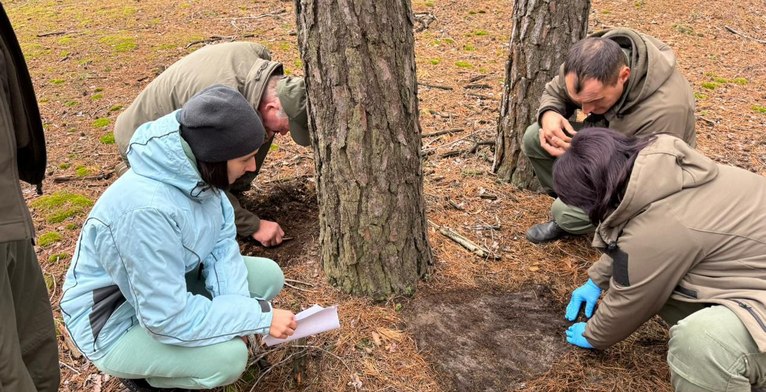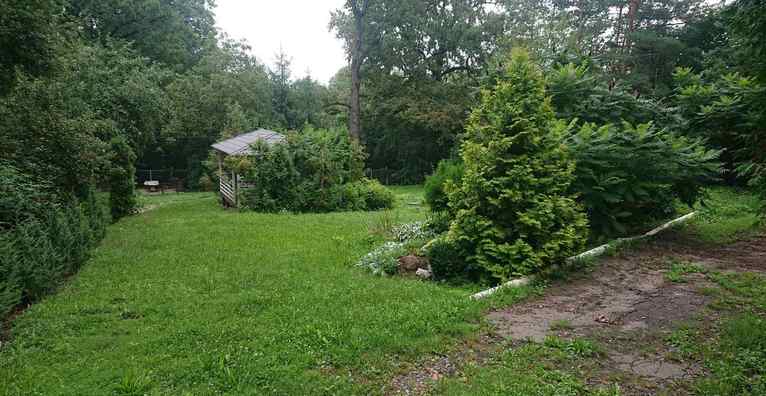Participation in the international conference COST ACTION FP1401 GLOBAL NETWORK OF NURSERIES AS EARLY WARNING SYSTEM AGAINST STALLIAN TREE PESTS (GLOBAL WARNING) “Global system for early detection of invasive pests and diseases in Europe, Novi Sad (Serbia) 17-20.10.2016 From 17 to 20 October 2016, an international conference was held at the National University of Novi Sad (Serbia) under the auspices of the European organization COST ACTION FP1401: “GLOBAL NETWORK OF NURSERIES AS EARLY WARNING SYSTEM AGAINST STALLIAN TREE PESTS (GLOBAL WARNING)” (“Global system for early detection of invasive pests and diseases in Europe”), which was held for representatives of the member countries of this COST Action group. The State Specialized Forest Protection Enterprise “Kharkivlisozahist” was a participant in this project from Ukraine. Goal conferences – a combination of research on the study of invasive (alien) pathogens and pests of forest plantations and ways of forestry management in order to limit the spread of invasive species. The work of the conference is to determine modern methods of disease identification, exchange of experience on new strategies in different countries and implementation of phytosanitary standards in forest protection, in particular, inspections of forest plantations, logging residues, wooden containers, etc., in order to avoid the spread of the disease. International trade in live plants and wood is one of the main ways of introducing invasive forest pests and pathogenic microorganisms, which cause significant ecological and economic damage. Most countries now determine mechanisms for regulating harmful organisms on the basis of their actual, or potential, economic and ecological damage. For this, a phytosanitary risk analysis (PRA) is used for each species. Unfortunately, PRA is only applied to species that are already known to science and industry. In fact, many, if not most, of the pests and diseases identified were not known before they caused serious damage and were therefore not subject to PRA. This problem indicates that the current system for identifying and regulating potentially dangerous species is too weak to protect the environment and the economy from damage by invasive species. This four-year project is implementing a so-called early warning system in Europe that identifies potential invasive pests and diseases of tree stands. The project aims to create: – a global international system for cooperation between scientists and producers in the protection and cultivation of forests; – develop common protocols for monitoring and identifying invasive pests and diseases; – to study ways to regulate harmful invasive species by creating nurseries and nurseries in some European countries to study introduced material. The conference was opened by the project curator, Dr. René Eschen (Switzerland), who reported that it had already been created during the first year of the project. The conference was attended by 87 participants from 28 countries: Austria, Britain, Greece, Denmark, Estonia, Spain, Italy, Lithuania, Mozambique, Nigeria, Norway, South Africa, Poland, Russia, Serbia, Slovenia, USA, Turkey, Tunisia, Hungary, Ukraine, Finland, France, Croatia, Czech Republic and Montenegro. Finnish scientist Mike Müller reported on a number of invasive (alien) pathogenic microorganisms that have caused numerous catastrophic epidemics around the world over the past two centuries. The frequency of epiphytotia and pandemic outbreaks has increased exponentially with the growth of international trade in the last 20 years. The research of the Finnish group together with Swiss and Norwegian scientists tested whether the damage and destruction of forest plantations caused by invasive (alien) pathogens of Asian origin are indeed random for different coniferous and deciduous tree species in Europe or whether the distribution of invasive pests and diseases in forest plantations in Europe coincides with the distribution areas of tree species in Europe. The database contains 75 European tree species with their distribution areas and a review of the literature and our own data on their susceptibility to invasive forest pathogens of Asian origin. Analysis of this database showed that susceptibility to Asian pathogens is significantly more common among tree species that are found only in Europe than in species whose range ranges from Europe to Siberia (percentage of susceptibility to the disease 52 and 19%, respectively). It was shown that severe damage to trees by Asian pathogens was observed for species distributed exclusively in Europe, while tree species with ranges from Europe to Siberia showed only weak or moderate symptoms of damage by Asian pathogens. In addition, the proportion of European broadleaf tree species susceptible to Asian pathogens is significantly higher than in conifers. It was also determined that in Europe, Asian pathogens pose a higher risk to temperate and Mediterranean forests, which are mainly composed of deciduous species, than to boreal forests, which are dominated by conifers, which are distributed from Europe to Siberia. Ruth Mitchell (UK) raised the issue of the use of different tree species by birds, invertebrates, mammals, fungi, mosses, lichens and vascular plants in different countries of Europe, and the use of this data to assess the most important tree species for further testing for the possibility of damage by invasive pathogens and pests. The creation of a database of the most important tree species for testing is an integral part of the project. K.V. Davydenko presented a report on the main pests and diseases of forests in Ukraine and methods of forest protection. In addition, primary data were provided for compiling a database of invasive diseases in Europe, using existing European and national databases of forest protection organizations (the database of the European project FORTHREATS and ISEFOR, the DAISIE (Delivering Alien Invasive Species In Europe) database, quarantine services, as well as data from the EPPO (European Plant Protection and Quarantine Organization) forest sector. Part of the report was devoted to the already identified main quarantine, regulated organisms in forestry. In addition, the use of phytosanitary standards and basic rules for phytosanitary monitoring, the use of the FAO Guide to implementation of phytosanitary standards in forestry and the most used phytosanitary standards (International Standards for Phytosanitary Measures (ISPMs)) were discussed. Antonio Cavadas (Greece) provided information on the use of drones to identify pest and pathogen damage in forest stands. The Chair of the first working group (Priority of tree species for monitoring nurseries), Dr. Roel Pötting, identified that approximately 40 tree species families have been identified for use in monitoring nurseries or monitoring in arboreta and botanical gardens. The group identifies a list of species imported into Europe, their origin, phenology, volume of imports, and the likelihood that these or related species provide a pathway for the development of invasive pests or diseases. The main tasks of the group are to identify, characterize and obtain a database of intercontinental tree trade and their ecological and economic value. The leader of the second working group (Standardized monitoring protocols for the identification of invasive tree pests and diseases at monitoring sites), Dr. Alain Roque, presented the methods used for tree monitoring in exporting countries, in monitoring nurseries, botanical gardens or arboretums, as well as their standardization. He provided already developed protocols in a standardized form for the detection and identification of some pests and diseases that are useful for an early warning system. The phytosanitary experts-researchers of the working group will conduct an inventory of information for the analysis of the risk pathways of each invasive species, study ways to prioritize tree pests and diseases for an early warning system. The main tasks of the group are to determine the data requirements for the risk pathway analysis and to develop identification protocols and monitoring methods for invasive tree pests and diseases according to a standardized design.
09:45 Learn more: Global system | |
|
| |
| Views: 8 | | |






